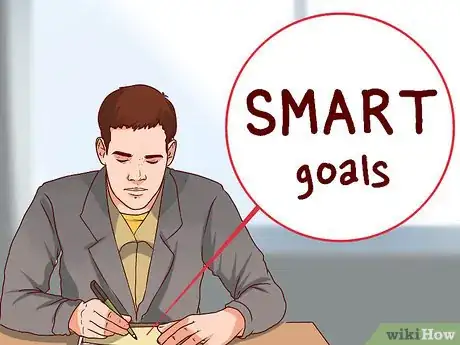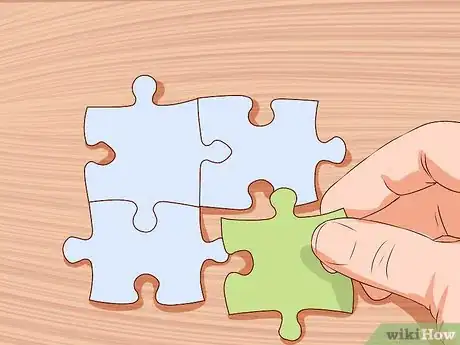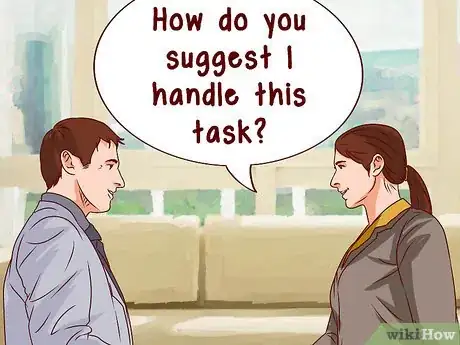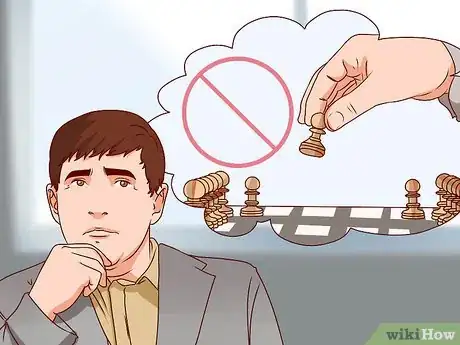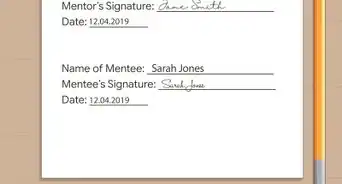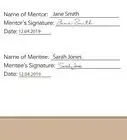This article was co-authored by Dawn Smith-Camacho. Dawn Smith-Camacho is the Owner of Whole Life Solutions, a business in which Dawn provides professional speaking on effective decision-making and navigating major changes for entrepreneurs and employees. She also supports individual coaching clients by identifying their core values, managing time, prioritizing, and honing in on their ideal path. Her clients include Vistage, UNICEF, the Los Angeles Police Department (LAPD), the Wedding Industry Professionals Association (WIPA), NACE, and Oracle.
There are 12 references cited in this article, which can be found at the bottom of the page.
wikiHow marks an article as reader-approved once it receives enough positive feedback. In this case, 90% of readers who voted found the article helpful, earning it our reader-approved status.
This article has been viewed 66,418 times.
In general terms, a strategist is someone who can develop and implement a plan of action. Having a good strategy is essential for achieving one's goals. If you are wanting to become more effective at work or meet more long-term goals, being a good strategist is the first step.
Steps
Identifying Your Objectives
-
1Know the issues. Developing strategy is built on a foundation of understanding. In order to create a method by which you can succeed in your given area, you must recognize and accept the shortcomings. When you understand what needs work, you can build a strong action plan for overcoming those obstacles. Here's how to spot those shortcomings.[1]
- Look for the activities or responsibilities you constantly put off. People often avoid what they feel less competent in.
- Pay attention to the feedback of those around you. If your partner and your boss give similar constructive criticism, the common ground may be an area of weakness for you.
- Ask the opinion of a trusted friend. Find someone who will speak candidly with you and ask him what areas you can refine.
- Look closely at previous setbacks. When you failed at a task in the past, what were the major barriers to your success?
-
2Recognize the resources available to you. The next step toward identifying your given objectives is to assess what resources you have at hand. Do you have everything you need to reach your goals? Are you maximizing these resources by using them most effectively?[2]
- For example, oftentimes, a leader may have a team of people there to help on a project, but only employ a few of the players. Make use of every person available to you for optimal success.
Advertisement -
3Figure out where you want to be. Now is the time to dream. Close your eyes and envision what you would like to see happening in your life over a set period of time. Think about your career. Your relationships. Your finances. Your passions. Your health. Ask yourself the following questions:
-
4Develop SMART goals. Once you have pinpointed a few goals that you would like to move towards, it's time to create an action plan to reach them. In order to ensure that these goals come into fruition, they need to meet certain qualifications. The most effective goals are SMART goals.[5]
- S is for specific. Your goals should outline who is involved, what you want to accomplish, where this will take place, when you expect to reach the goal, which requirement or resources are needed, and why you want to achieve it (i.e. the purpose).
- M is for measurable. Your goals should include a concrete and clear way to track progress.
- A is for attainable. You should be able to see yourself reaching these goals and know that you have the skills, resources, and willpower to achieve them.
- R is for realistic. Your goals must be feasible based on your unique circumstances and the resources you have available to you. Set the bar high, but not so high that it's nearly impossible for you to achieve it.
- T is for timely. Your goals must include time constraints. If there is no time frame, there is no urgency. Allow yourself a reasonable amount of time to reach the goal while still challenging yourself.
Maximizing Effectiveness
-
1Break large tasks down.[6] A good strategist knows how to work smarter and not harder. One way to work smart is to work your way through big projects by tackling smaller, manageable parts. This helps you beat excess stress and fend off procrastination. Plus, as you complete each part, you gain a greater sense of self-efficacy and confidence in your abilities.
- Look at the project as a whole and decide how it can be divided into several steps. What should be done first? Second? Third?
- Create an action plan that allows you to complete each section in a logical order. Once every section is complete, review the project in its entirety before submitting.
-
2Seek input regularly. An effective strategist knows that continual growth requires taking a step back and reassessing one's methods. It also means seeking feedback from others. Getting input from others brings awareness to what's working or not working. It also reinforces the idea that success is a team effort.
- Be specific in your request. Ask, "How do you suggest I handle this task?" or "How do you think I can improve my client relationships?"[7]
- Whether you agree or disagree with the response, paraphrase the feedback so that the person knows you received it (e.g. "So, you're saying I need to..."). Then, thank the person for his input. It can be very effective to seek input from a range of sources--superiors and subordinates alike.
-
3Learn to delegate. Good strategists are highly impactful leaders. One technique that helps you to maximize that effectiveness is delegation. When you are tackling a difficult project in which a team member has the skills to assist, reach out for help. This strategy can greatly improve your performance and productivity.
- Delegation is an effective strategy because it enables those who are properly suited for specific tasks to handle them accordingly. That way you are not wasting time trying to retrain or learn new skills that someone on your team already has.
- Another reason to delegate is to give other team members a chance to learn tasks that you do repeatedly, and, therefore, have already mastered.
- Let's say you have a big project that needs marketing, statistics, and writing work in order to be completed. You might reach out to your best people in those categories. Doing so will ensure that the project receives the most capable hands on deck.
-
4Surround yourself with effective people. A good strategist does not try to be the smartest man in the room. He does, however, know the smartest man in the room. Successful, effective people resonate an energy that is contagious. If you surround yourself with people who are empowering, resourceful, and motivated, you will be, too.
- If you are not convinced that those you spend time with influence you, consider this. There is a popular personal development concept that describes any person as being the average of the 5 people you spend the most time with.[8]
- Even if the metrics are not accurate, you have to know that others' good--and bad--habits can rub off on you. So, spend time with people who embody the qualities you, too, would like to possess.
Fostering Continual Growth
-
1Reassess your progress. A big part of being a competent strategist is knowing when to switch tactics. Developing goals is wonderful, but you also must be willing to terminate a plan or incorporate new strategies if you are not getting the anticipated results.
- If, upon reassessment, you find that you do not see the progress you would like, go back to step one. Consider what and why your methods are not working. Examine what resources you currently have at your disposal. Then, come up with some new ways of meeting your objectives.[9]
- Know that it takes time to meet many goals. Don't switch strategies until you can confirm that the tactic is, in fact, not working. In some cases, you may not have given your methods enough time to show results.
- Consider this scenario: you are aiming to build up a long-term savings account. You were able to consistently deposit a set amount into the account every week. After successfully moving towards this goal for a period of time, you might decide to increase the amount you are depositing each week to meet your long-term goal faster.
-
2Be open-minded. If you are closed to new ideas and techniques, you limit yourself. An essential part of your arsenal as a strategist must be a willingness to be wrong, to be surprised, and to find inspiration in the most unlikely of places. If keeping an open mind poses a challenge for you, try the following tips:[10]
- Listen more, even to those with lesser titles than you.
- Reinforce those who have the courage to try new things or make changes.
- Gather all the facts before making a decision.
-
3Build an always-learning attitude. A good strategist is like a sponge, constantly soaking up knowledge and experiences. Because science and technology are always evolving, you must understand that you, too, must educate yourself to stay abreast.[11] [12]
- Learn by reading books, watching films and documentaries, and completing online and in-person training in your given area. Regularly acquire new skills.
- Observe others to see how they are doing things.
- Ask questions; never assume you know everything.
-
4Anticipate challenges and plan accordingly. A capable strategist has mastered the notion of foresight, or he has someone on his team who has this skill. Many great leaders and businesses are toppled because a new trend or technique rendered their old methods useless. In order to prevent this, one must anticipate and plan for challenges. Do this by:[13]
- Staying connected. Keep your finger on the pulse of the people. Know what their challenges are.
- Researching your area of expertise. Stay abreast of new trends, products, and the users' response to them.
- Consult with the customer or end-user. Consider their opinion on new initiatives.
- Develop special teams to anticipate and respond to challenges.
Expert Q&A
-
QuestionWhere should I start when I'm trying to figure out my goals in life?
 Dawn Smith-CamachoDawn Smith-Camacho is the Owner of Whole Life Solutions, a business in which Dawn provides professional speaking on effective decision-making and navigating major changes for entrepreneurs and employees. She also supports individual coaching clients by identifying their core values, managing time, prioritizing, and honing in on their ideal path. Her clients include Vistage, UNICEF, the Los Angeles Police Department (LAPD), the Wedding Industry Professionals Association (WIPA), NACE, and Oracle.
Dawn Smith-CamachoDawn Smith-Camacho is the Owner of Whole Life Solutions, a business in which Dawn provides professional speaking on effective decision-making and navigating major changes for entrepreneurs and employees. She also supports individual coaching clients by identifying their core values, managing time, prioritizing, and honing in on their ideal path. Her clients include Vistage, UNICEF, the Los Angeles Police Department (LAPD), the Wedding Industry Professionals Association (WIPA), NACE, and Oracle.
Career & Life Coach Think about what you really care about. What do you want your life to look like for the next 10, 20, 30, or 40 years. Then, see how you can make that happen.
Think about what you really care about. What do you want your life to look like for the next 10, 20, 30, or 40 years. Then, see how you can make that happen.
References
- ↑ http://www.fastcompany.com/3026105/dialed/the-importance-of-finding-and-facing-your-weaknesses
- ↑ https://www.projectsmart.co.uk/are-you-using-your-resources-ideally.php
- ↑ Dawn Smith-Camacho. Career & Life Coach. Expert Interview. 13 May 2020.
- ↑ Dawn Smith-Camacho. Career & Life Coach. Expert Interview. 13 May 2020.
- ↑ http://www.umassd.edu/fycm/goalsetting/resources/smartgoals/
- ↑ http://columns.uga.edu/news/fulltext/break-large-tasks-down-into-smaller-more-manageable-pieces/
- ↑ http://www.cmd.act.gov.au/__data/assets/pdf_file/0003/463728/art_feedback.pdf
- ↑ http://personalexcellence.co/blog/average-of-5-people/
- ↑ http://www.lifehack.org/articles/productivity/4-ways-track-your-progress-toward-your-goals.html
- ↑ http://www.forbes.com/sites/davidkwilliams/2013/01/07/the-5-secret-tricks-of-great-people-how-to-become-open-minded-in-2013/#3c18c21e3bb3
- ↑ https://effectivesoftwaredesign.com/2012/09/24/continuous-learning-keeping-up-to-date-and-acquiring-new-skills/
- ↑ http://www.inc.com/aj-agrawal/4-reasons-why-we-should-never-stop-learning.html
- ↑ https://hbr.org/2013/01/strategic-leadership-the-esssential-skills
About This Article
To become a good strategist, begin by identifying something specific you would like to achieve. This could be a bad habit you would like to break or a long-term goal you aim to reach. Once you have an objective in mind, establish a SMART goal, meaning a goal that is specific, measurable, attainable, realistic, and timely. Then, break this larger goal into a series of steps. As you work toward your goal, stay positive and keep track of what you have accomplished. For more information from our reviewer, including how to accept constructive criticism, see below.




